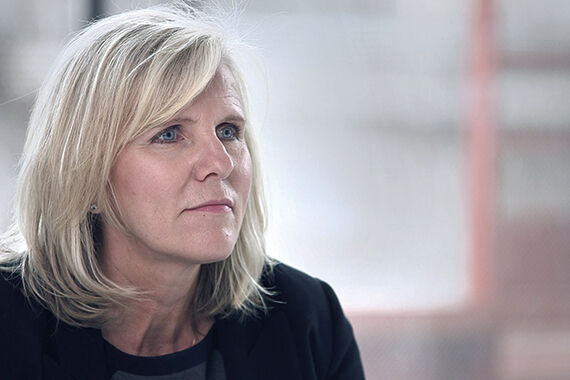Leading questions: Dr Tracey Vell

This site is intended for health professionals only

Dr Tracey Vell, medical executive lead for primary care at NHS Greater Manchester and medical director for Health Innovation Manchester, tells senior reporter Jess Hacker about the area’s financial deficit
How is Greater Manchester’s financial outlook?
It’s not a secret that Greater Manchester has a huge financial deficit. We’re not on our own. The whole of the NHS is struggling, and meanwhile we’re seeing increasing frailty in the wider population. Changing the systems doesn’t seem to have made that better.
At a system level, are you hearing any solutions to the national deficit?
Not solutions. We have interventions. Whether they are solutions [or not], we are wanting to control our own destiny. Obviously there are solutions coming out of central Government because the move to integrated care systems (ICSs) was a central movement. There are solutions to access and [implementing] digital [working], but there needs to be flex in a local system to look at all populations and recognise what the need is there, and deliver differently from some of the national objectives. I don’t think primary care plays a great part in the Greater Manchester deficit. It’s more of a solution than a problem.
What impact does the deficit have on the care that’s being delivered in Greater Manchester?
There are only a few options for care when you’re in debt. Either you remain in debt and deepen it or you resolve it.
The options for resolving it include decommissioning services in more expensive pots, such as hospitals. But in my view, we would need to move services. That’s our core theme in Greater Manchester: population health.
Our approach is to move things closer to people’s homes because that is usually cheaper as there are lower overheads. Pounds spent in primary care are worth much more, and we will get much more done with that than we would do in a secondary care setting. We need to look at moving services rather than decommissioning them.
Where does the responsibility for changing that sit?
In addition to moving services that could potentially be decommissioned, we need to think about different funding models. We have a very hierarchical NHS that talks to providers in secondary care and commissioners but offers only limited conversations with primary care providers. Because of that hierarchy, all the transitional funding goes into the place where the deficit is set – hospitals. That deepens the deficit.
Giving [secondary care] transitional funding [will] temporarily cover over their deficit. This happens in Greater Manchester – we keep entering that cycle.
We need to be putting the transitional investments into primary care. That way we can deliver more proactive care and screening and make our population healthy. Then in five or 10 years we won’t incur the cost [of illness] and we can invest in shiny buildings. That’s never an in-year situation so we get into temporary funding, trying to get on top of in-year resolution. We can never change the whole way the health service works as a disease-type service in one year. Give us 10 years. But the reason we don’t [get 10 years] is because there are lots of people looking into spreadsheets and ledgers for in-year savings.
If that is a 10-year plan, what is step one?
We’d need to look at how we will build that model up and battle [for] it. The system would need to decide what services should be moved: what does not absolutely need to be done in hospital, [what] should not be done in hospital. That’s not to say we swing the pendulum to primary care and let primary care deliver it, but if we are already starting to make savings from the shift, we can decide what primary care can do.
To that point, primary care excels at collaboration. But what is the main task for PCNs? It’s been quite confused centrally, giving different targets and different approaches. But the key approach has got to be a population health methodology, which is not in the centre. For that to work we need to consider how we train staff in risk stratification and use of data and intelligence, while looking at our whole population and asking what outcomes we want to change. This will drive integration, but not integration for integration’s sake – it might become clear we need to integrate with housing [to change some outcomes], not with community nurses, for example.
Is that a step toward integrated neighbourhood teams (INTs)? Will changing primary care at scale affect the deficit?
INTs might be a step but I’m more interested in training everybody to have these conversations – you can integrate all you like. A good example is in using digital. We always think first about patient-facing digital [approaches] but we need to consider the digital back office. So we ‘integrate’ with the team so that the patient doesn’t have to be hounded. Actually, we are just connecting behind-the-scenes with [the] digital back office. We need to change the way we talk to people using our services: we forget we are making services for them, not for us. So we need to get a grip of what we need to be providing. Overhauling that comes way before integration.
What can’t stay the same if anything is to change?
What can’t stay the same is how we keep putting money into services that are showing the highest workforce numbers and the lowest productivity. We have to stop investing in those and start talking to community providers, the voluntary sector, social care. We need to get behind them.
Read more articles from Pulse PCN’s Leading questions series here.

Register today to receive weekly newsletters and a free copy of Pulse PCN with Pulse magazine
Sign up now